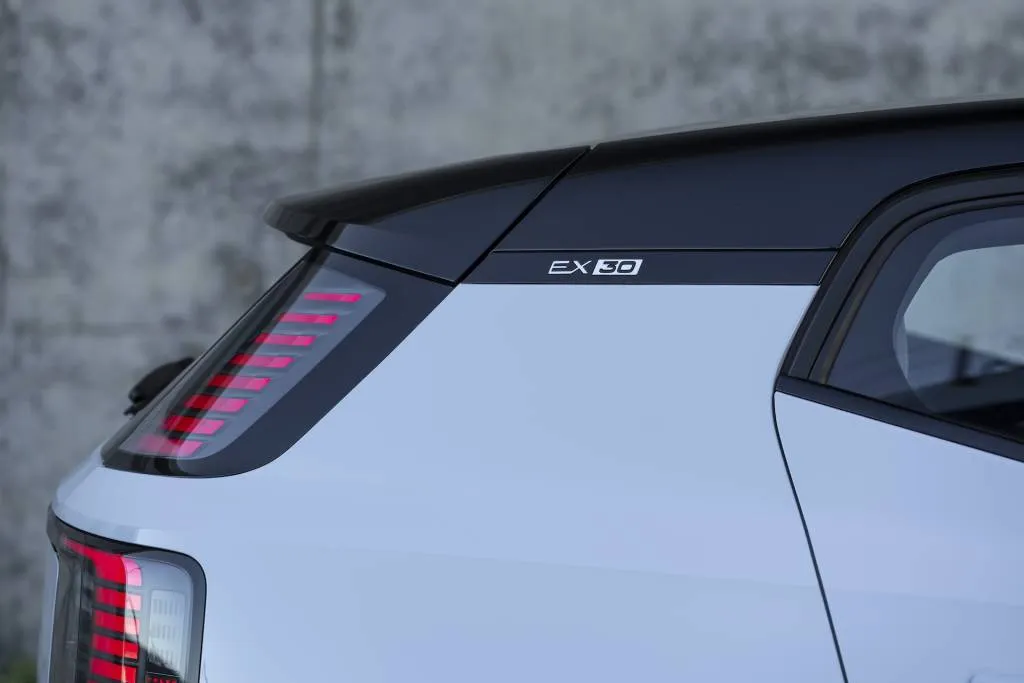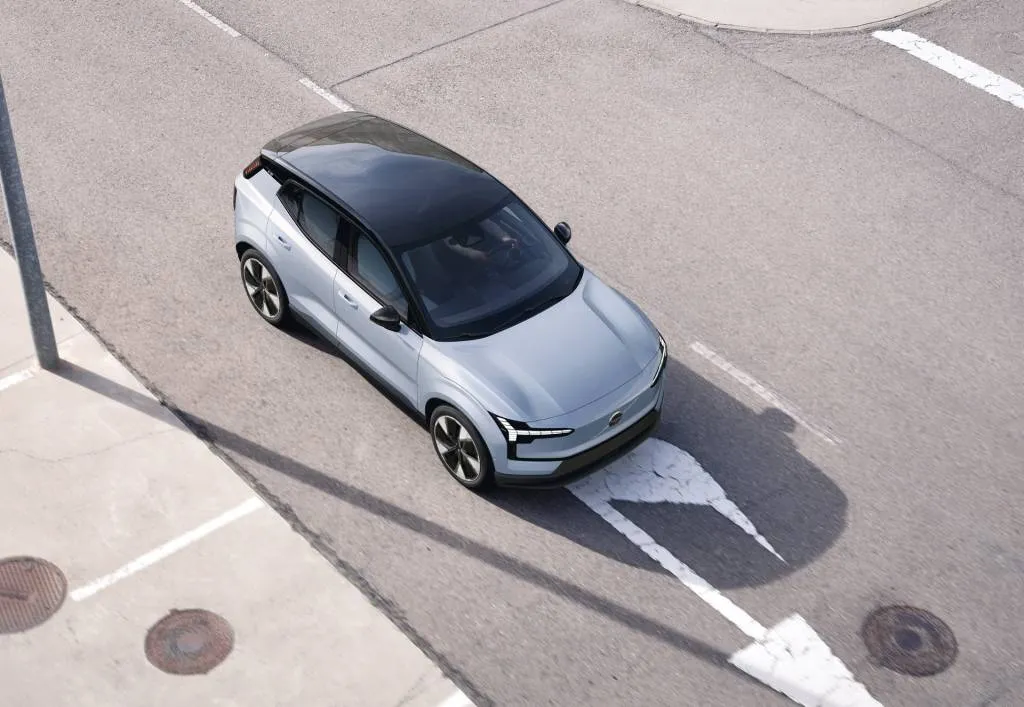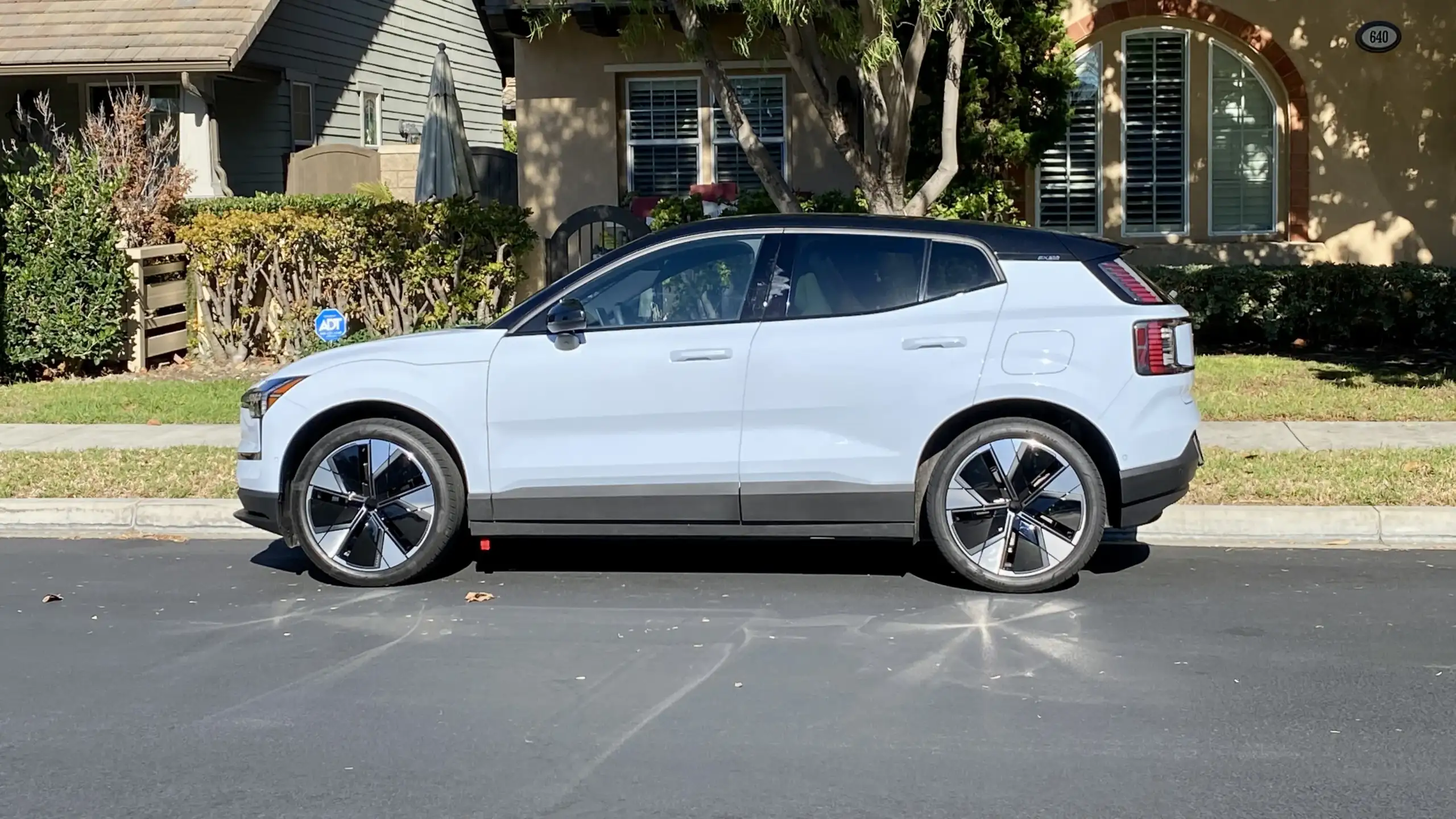In a life cycle assessment of the Volvo EX30 electric vehicle released Thursday, the automaker underscored that its upcoming compact EV has the lowest carbon footprint of any electric Volvo yet.
The team behind the EX30 analysis looked at two EX30 versions—one with the 69-kwh lithium nickel cobalt manganese oxide (NMC) battery pack, the other with the 51-kwh lithium iron phosphate (LFP) battery pack. And it pointed to a very significant difference that makes the LFP version by far the greener pick.
“The NMC battery has an impact that is almost twice as high as the LFP battery, per pack,” Volvo summed, while it only offers 35% more capacity.
Volvo EX30 NMC vs LFP battery manufacturing CO2, future potential gains
That said, there’s a big asterisk to this conclusion pointing to the greenest EX30: Americans can’t choose it.
The LFP decision appears to go beyond the EX30 as well. U.S. Volvo spokesperson Russell Datz confirmed to Green Car Reports that “it’s not currently in Volvo’s plans to offer LFP batteries in the U.S.”

2025 Volvo EX30 electric SUV (single-motor, Cloud Blue)

2025 Volvo EX30 electric SUV (single-motor, Cloud Blue)

2025 Volvo EX30 electric SUV (single-motor, Cloud Blue)
LFP pack for Europe and China has half the CO2 impact
The EX30 analysis remains one of the first such reports, following on the heels of carbon footprint studies of the Volvo XC40 Recharge and Polestar 2. Volvo notes that this one builds and further develops the methodology in those previous reports and says that one of the goals of this is so it can be used to “make informed decisions.”
While it’s likely that many automakers keep such data and methodology for internal reports—or for data to be touted to shareholders in small pieces in sustainability reports, Volvo is one of the few automakers making them publicly available. Tesla includes some aspects of life cycle analysis, including EV battery longevity, in its Impact Report, but that hasn’t been released since 2022.
Volvo found the lifetime CO2 of the EX30, based on 200,000 km (124,000 miles), to be 36,000 kg and 31,000 kg, for the NMC and LFP versions, respectively. With the same methodology applied, Volvo had calculated the lifetime CO2 of the XC40 Recharge to be 54,000 kg of CO2 equivalent.

2024 Volvo XC40 Recharge
To compare that to a gasoline-fueled internal-combustion model, Volvo’s previous report on the XC40 Recharge pegged a gasoline version at 58,000 kg.
In a chart of total impact per life cycle phase, Volvo shows that the greatest phase is of course the use phase itself. With greater vehicle use, the impact per mile (or km) keeps decreasing—to the degree that overall CO2 from all stages, per mile (or km), is just 65% assuming a 300,000-km lifetime (186,000-mile) than the report’s 150,000-km (124,000-mile) baseline.
It also notes, as Green Car Reports has pointed out in various ways, EVs start with a larger carbon footprint that pays back through the life of the vehicle, and your EV is as clean as the grid you plug into, and the effective EX30 carbon footprint is far lower if the grid is powered by renewable sources like wind versus the projected composite global electricity mix.

2025 Volvo EX30
Small car, big battery footprint—by weight, and by CO2
It’s not unusual that the battery pack in the EX30 constitutes nearly a quarter of its curb weight. The larger-capacity NMC pack contributes 858 pounds toward the EX30’s roughly 4,000-pound weight, while the smaller LFP pack weighs 902 pounds. Volvo notes that two different suppliers make the NMC cells, so it’s split the difference between the two.
On the materials front alone, 44% of the CO2 footprint for the NMC version of the EX30 is in the battery pack. But the LFP advantage isn’t down to just that; Volvo says that per kwh, LFP cells have about half the carbon impact related to manufacturing. And the EX30 with LFP cells is also about 2% more efficient in the use phase.

Volvo EX30 lifetime CO2 related to various phases
Although the battery pack is the largest single carbon-intensive component in the car, by far, Volvo points to the overall weight of the vehicle and the balance of materials as being related both to the EX30’s environmental impact and ease of manufacture. About 55% of its weight is from aluminum, steel, and iron, which contribute 58% of the vehicles climate impact not counting the battery pack.
Material production and refining, manufacturing logistics, and the manufacturing of the vehicles themselves all contribute significantly, too. Currently, the EX30 is built at one factory in Zhangjiakou, China.

2025 Volvo EX30
All said, 16% lower CO2 for EX30 LFP version
Carried out to the entire vehicle, factoring in those other manufacturing and materials aspects plus use, end-of-use, and more, the EX30 with the LFP pack has a carbon footprint 16% lower than the model with the NMC battery.
To frame it another way, based on those XC40-family results, switching from the NMC to an LFP pack, in markets where it’s offered, might feasibly reflect a greater improvement in lifetime CO2 than shifting from an equivalent gasoline model to an NMC EX30.
It reinforces why some automakers have been steering towards LFP battery tech. Yet Tesla has stalled at the Model 3 only in its U.S. rollout of the chemistry, and Ford and Rivian, among others, aren’t rolling out the tech as quickly as originally touted.
The study starts with a baseline 15-year, 124,000-mile vehicle lifespan, with half of the total vehicle mileage accumulated in the first five years. It looks at cradle-to-grave emissions and does assume for the changing of wearable items like tires and wipers, but not potential accident damage along the way. Electricity use itself is based on the WLTP driving cycle, adding losses; since that cycle tends to be very optimistic about efficiency versus real-world results, somewhat more energy might be needed in reality.

2025 Volvo EX30
Various projections are also used not only in what the global energy mix will look like by then but also how built-out capabilities for extracting the most from recycled vehicles might be by then.
The EX30 may also offer the lowest carbon footprint of any Volvo ever, but it’s not possible to compare these numbers back to the brand’s previous models, which carried a reputation for longevity. Let’s hope the EX30 lasts as long.
Read the full article here




